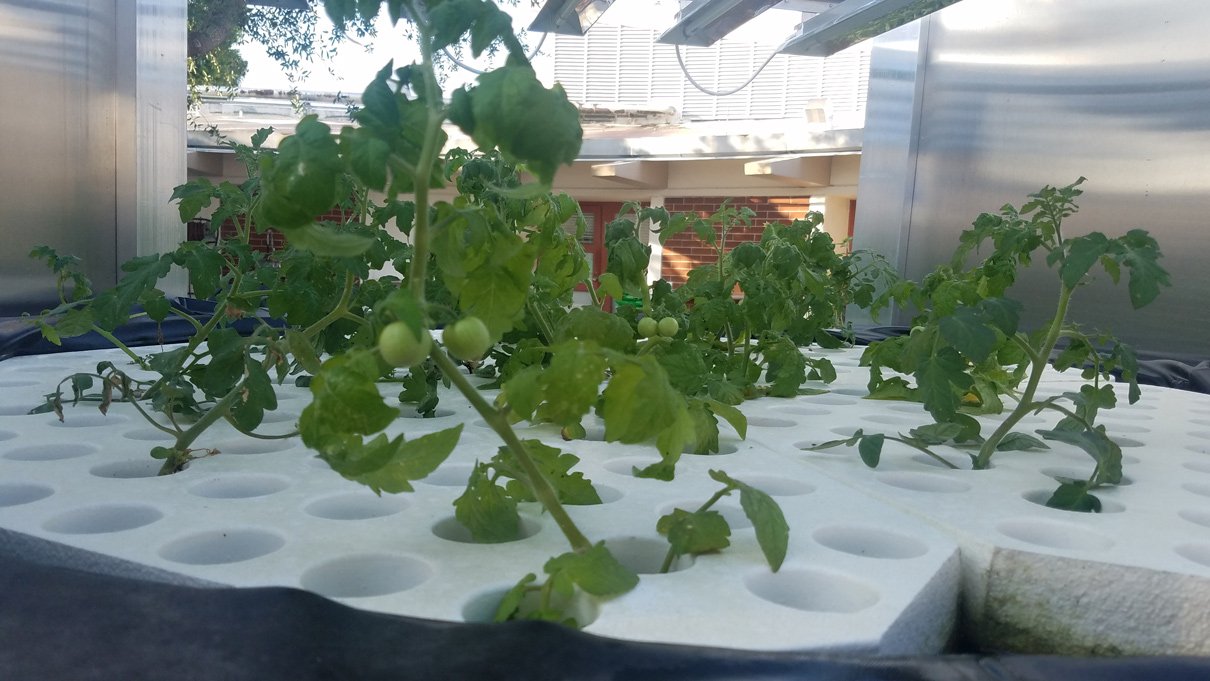Eye on Education: Alexander D. Henderson University School
Alexander D. Henderson University School and FAU High School STEM Lab installed two AquaGrove aquaponic systems thanks to sponsors Advanced Green Technologies and Advanced Roofing.
If you think tilapia is the only aquaculture to raise in an AquaGrove, think again. The students at A.D. Henderson University School (ADHUS) have two AquaGrove aquaponic systems on their campus which are home to a total of 100 crayfish. Being led by Allan Phipps, District STEM Coordinator, the innovative students of ADHUS and Florida Atlantic University (FAU) High School have created “crayfish hotels” to provide optimal conditions for raising the fresh water crustaceans.
Such innovation isn’t new for the accelerated students at ADHUS and FAU High School. ADHUS is a public laboratory school serving elementary-middle school (K-8) students on the campus of Florida Atlantic University in Boca Raton, Florida. The high school is merit-based and includes students taking a college readiness test as early as 8th grade to be accepted. Some of the students will have their bachelor’s degree before they even receive their high school diploma with direct admission to FAU Medical School. The schools are the first in the state to be recognized by Google and named a 2017 Google for Education Reference School District, and their trailblazing efforts don’t stop there… In addition to leading a myriad of STEM competitions, they have developed their own coding competition that has become a national event and have built a GT-EV Electric Supercar capable of 120 miles/charge. Their STEM lab includes a robotic hand, drones, 3D printing, laser cutting, etching, printing, CAD design, electric vehicle development, hydrogen cell vehicles, as well as autonomous robotics and water robotics - everything a future scientist or engineer could need to pave the way to a successful career.
As for the students attending the school, many have already made their mark in science and technology in a big way. Students have achieved goals of which most could only dream including the honor of having work published in the New England Journal of Medicine. Additionally, one of their students developed an innovative machine called SLIDEMAP that increases the speed and accuracy of cancer diagnosis, while another student was recognized for making a connection and identifying a gene that is found in both asthma and breast cancer patients.
With so many innovative and successful STEM programs, it comes as no surprise that the schools have acquired two AquaGrove systems to run comparative studies. Last month, they began their first full system cycle with crayfish and are growing tomatoes and herbs. Each system has approximately fifty crayfish which are being monitored by underwater cameras, appropriately name the “Critter Cam”. While the critter cam is currently in beta phase, a more permanent monitoring system is being finalized and will be viewable online and via an app that is expected to launch in the coming months.
AquaGrove is proud to have A.D. Henderson University School and FAU Lab Schools as part of our community of growers. We look forward to learning and sharing more about their latest innovations and developments with their AquaGrove and aquaponics learning program.




